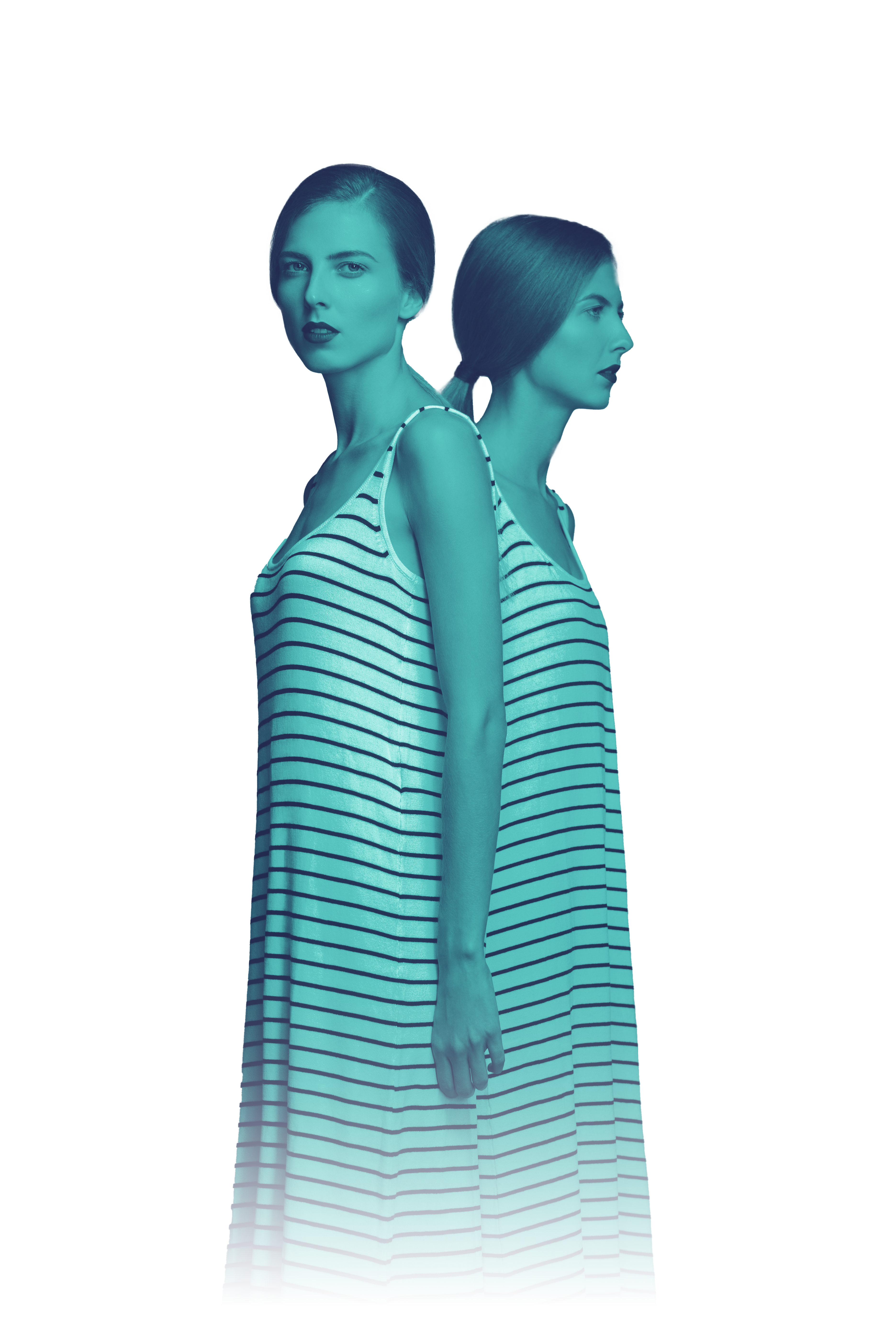Birds do it. Bees do it.
June 2022
So when will educated B2Bs do it?*


Tim Wilson-Frier
B2B creative remains dominated
by marketing at the least effective
end of the spectrum, and so struggling
to deliver long-term commercial value,
there’s a huge opportunity for B2B
brands to gain competitive advantage.
Because driving creative effectiveness
in B2B really does drive commercial growth. It all comes down to a simple matter of falling in love…
Senior Strategist, twogether
Because, just to be clear, we don’t.
On an instinctive level if nothing else.
A fact that’s borne out in recent research; one particularly damning stat being that 77% of B2B ads have no brand building effect, according to the B2B Institute’s research with System 1, choosing to focus instead largely on sales activation and demand gen.
It’s tricky to know exactly what the ratio is between cause and effect here, but the fact is that what little creativity is present in such ads is typically short-sighted, short-termist, and short on quality. And that’s being kind.
In fact, if we’re honest, it’s often just plain boring.
We all understand the power of creativity and emotion in marketing.
It’s habitually born of a desire to connect product, sales, finance, and marketing while simultaneously driving brand and revenues. Which is a great idea, but a big ask. And doomed to failure if the organisation doesn’t fully commit to it creatively and emotionally as well as idealistically. It also gives rise to your classic vicious circle.
Accordingly, we have to recognise what’s really going on here – the real reason so many B2B ads don’t perform and drive growth.
Because they’re not very good. Because they fail to build memory structures. Because they’re not truly invested in an ‘idea’. Because they don’t create and nurture the mental (emotional?) ‘availability’ we want from our audiences.
Remember, we’re more renting a stage in their minds here (perhaps 95%) than hunting in a game reserve (the remaining 5%).
We have to learn that showmanship and not salesmanship is what’s likely to win in the end.
The vicious circle.
Mental availability.
It fails to drive revenue or growth, let alone brand equity
The ad performs badly (as it
was always
destined to)
Management get annoyed
They double-down on sales activation / demand gen
And so the never-ending, unvirtuous circle begins all over again






Let’s say it once and for all then.
Creativity is a powerful tool.
Roll all this thinking up into the boardroom (picture the CMO being able to actively demonstrate the bottom-line impact of her department’s activity to the rest of the
C-suite), and it’s a conversation changer. Suddenly marketing is putting something very new on the table. Namely a capacity to drive business performance, and not
just in the short-term. To build a future pipeline rather than just secure meetings.
To return shareholder value, to impact IPO valuations, and more.
That’s the true power of creativity. And it’s there for the taking.
Some important lessons must be learned if we’re to really take advantage though.
That customers really don’t care about your product for instance. And that, instead, you have to make them care about you.
Think about it. How many times, having seen an ad, have you immediately dropped everything and rushed out and bought the product in question? Hardly ever, right? (There’s that 95:5 ratio working in practice). And yet this is invariably how campaigns are measured in B2B. How the next campaign investment is planned. Did it convert? How did it compare with X? Did we persuade the prospect? Indeed, persuasion is too often used as the key and only metric of success.
Making the customer care.
%
of B2B buyers think that we’re all selling basically
the same stuff**
62
%
of B2B buyers see no real difference between suppliers**
86
What else?
Commoditisation and micro-differentiation.
B2B mindsets have to change.
And, as we’ve already seen and
said, there are clear and compelling
commercial reasons for them to do so.
To start seeing marketing as more
than a short-term feeder club for sales.
To start leveraging its power to brand
build, create future value, and secure
sales interactions further down the
funnel. Oh and to attract talent
(which has never been a bigger
or more critical part of the marketing
remit, or that of the business at large.)
For now (and I’m aware that this will be
both controversial and tough for many
of them to hear) very few B2B brands
are truly marketing-led. Even those
who may think they are.
To prove the point, we need only look
(of course) to B2C, where marketing isn’t
the mere sales support function it often
still remains in B2B. Where marketing
is considered – in fact is expected to be
– one of the key decision makers and business
shapers. Where marketing is a co-pilot, not a
passenger. Where creativity isn’t something
to be mistrusted, but celebrated and embraced.
Loved even.
And, happily, signs are emerging that B2B may at last have been, um, ‘struck by cupid’s arrow’ as it were. According to recent figures from LinkedIn*** 82%
of B2B marketing leaders globally, note that “creative confidence” is growing, with 69% agreeing that B2B purchasing decisions are just as emotionally driven
as in B2C. 81% meanwhile, believe that B2B brands
are producing creative campaigns that rival
consumer brands.
Before we get too carried away, it is worth noting that these stats are drawn from B2B marketers themselves, who are scarcely likely to decry their own creativity.
The fact that they clearly now care about how they
are perceived creatively, however, is surely a sign
that their thinking is moving in the right direction.
It is to be hoped that their hearts follow.
Come on B2B, let’s do it.
Let’s fall in love.
Falling in love.
* With apologies to Cole Porter
** Source: Data Decisions
*** Source: LinkedIn survey of 1,600 B2B marketing leaders conducted between April and May 2022


get in touch








I mean, who hasn’t been moved by at least one ad or campaign over the years? One of John Lewis’s festive spots perhaps? Guinness’s famed ‘Tick follows Tock’ surfing thing? Whatever.
Here’s the question. Given that we’ve all experienced and loved great marketing creativity at some point, why do we seem
so stubbornly reluctant to wield it in B2B?
Or at least wield it well?
Creativity – creative, emotional commitment
– is a powerful, important tool in the tech
marketing arsenal, and it’s time we started
seeing and using it that way. There is clear
and compelling commercial value in challenging incumbent thinking and promoting creativity
to the top of the agenda. In building out
professional, social, emotional connections
and benefits.
More? Okay, according to Data Decisions:

Creativity is the second biggest factor when it comes to marketing effectiveness – outpaced only by brand size

Brands that connect with buyers on an emotional level see double the impact of those selling business or functional value

B2B branding works; with audiences around 60% more likely to consider, purchase, and even pay a premium for brands with which they have a ‘high brand connection’ over ‘low brand connection’ competitors

‘Features, functions, and business outcome’ based marketing has a 21% lift in perceived brand benefits

‘Professional, social, and emotional benefit’ based marketing has a 42% lift
Moreover, most of this isn’t even new data.
That rarely stacks up against the audience’s own metrics, however. And those are the ones
that really count. 62% of B2B buyers think that we’re all selling basically the same stuff**, for example. 86% see no real difference between suppliers – or value the difference enough to
pay for it** – with many believing that the fabled ‘Unique Selling Proposition’ (USP) is now dead.
We need to accept that we are, for the most part (the 95%), in the publicity business rather the persuasion business (the 5%). Once we do, we can then see and start to fully appreciate the balance between priming the future audience and activating the in-market one. It makes one wonder how many B2B CMOs are currently acting on that basis, however. How many are anywhere close to even a 60:40 or 50:50 brand to sales activation investment ratio?
Well take the sea of commoditisation and micro-differentiation that now characterises many B2B marketplaces. We buy from whom we think of first under such circumstances (mental availability). That being the case, tech brands are doing themselves – and their customers – no favours if they don’t truly differentiate. I.e. if they don’t flex their creative and emotional muscles and really engage.
Despite this, instead of committing to the kind of ‘publicity creative’ that will build their brands and prime the audience, many continue to work very hard (spending $millions in the process) chasing that same elusive ‘5%’ as their competitors. And that with poor, samey, utterly forgettable imagery and messages.
%
of B2B marketing leaders globally, note that “creative confidence” is growing***
82
%
agree that B2B purchasing decisions are just as emotionally driven as in B2C***
69
%
believe that B2B
brands are producing
creative campaigns that rival consumer brands***
81











get in touch


%
of B2B ads have no
brand building effect
77


I mean, who hasn’t been moved by at least one ad or campaign over the years? One of John Lewis’s festive spots perhaps? Guinness’s famed ‘Tick follows Tock’ surfing thing? Whatever.
Here’s the question. Given that we’ve all experienced and loved great marketing creativity at some point, why do we seem
so stubbornly reluctant to wield it in B2B?
Or at least wield it well?
A fact that’s borne out in recent research; one particularly damning stat being that 77% of B2B ads have no brand building effect, according to the B2B Institute’s research with System 1, choosing to focus instead largely on sales activation and demand gen.
It’s tricky to know exactly what the ratio is between cause and effect here, but the fact is that what little creativity is present in such ads is typically short-sighted, short-termist, and short on quality. And that’s being kind.
In fact, if we’re honest, it’s often just plain boring.
Well take the sea of commoditisation and micro-differentiation that now characterises many B2B marketplaces. We buy from whom we think of first under such circumstances (mental availability). That being the case, tech brands are doing themselves – and their customers – no favours if they don’t truly differentiate. I.e. if they don’t flex their creative and emotional muscles and really engage.
Despite this, instead of committing to the kind of ‘publicity creative’ that will build their brands and prime the audience, many continue to work very hard (spending $millions in the process) chasing that same elusive ‘5%’ as their competitors. And that with poor, samey, utterly forgettable imagery and messages.
B2B mindsets have to change.
And, as we’ve already seen and said, there are clear and compelling commercial reasons for them to do so. To start seeing marketing as more than a short-term feeder club for sales. To start leveraging its power to brand build, create future value, and secure sales interactions further down the funnel. Oh and to attract talent (which has never been a bigger or more critical part of the marketing remit, or that of the business at large.)
For now (and I’m aware that this will be both controversial and tough for many of them to hear) very few B2B brands are truly marketing-led. Even those who may think they are.
To prove the point, we need only look (of course) to B2C, where marketing isn’t the mere sales support function it often still remains in B2B. Where marketing is considered – in fact is expected to be – one of the key decision makers and business shapers. Where marketing is a co-pilot, not a passenger. Where creativity isn’t something to be mistrusted, but celebrated and embraced.
Loved even.
And, happily, signs are emerging that B2B may at last have been, um, ‘struck by cupid’s arrow’ as it were. According to recent figures from LinkedIn*** 82%
of B2B marketing leaders globally, note that “creative confidence” is growing, with 69% agreeing that B2B purchasing decisions are just as emotionally driven as in B2C. 81% meanwhile, believe that B2B brands are producing creative campaigns that rival consumer brands.
Before we get too carried away, it is worth noting that these stats are drawn from B2B marketers themselves, who are scarcely likely to decry their own creativity. The fact that they clearly now care about how they are perceived creatively, however, is surely a sign
that their thinking is moving in the right direction.
It is to be hoped that their hearts follow.
Come on B2B, let’s do it.
Let’s fall in love.





Section Space
Section Space
Section Space
Section Space
Under Head
Btwen Text
Section Space
Section Space
Section Space